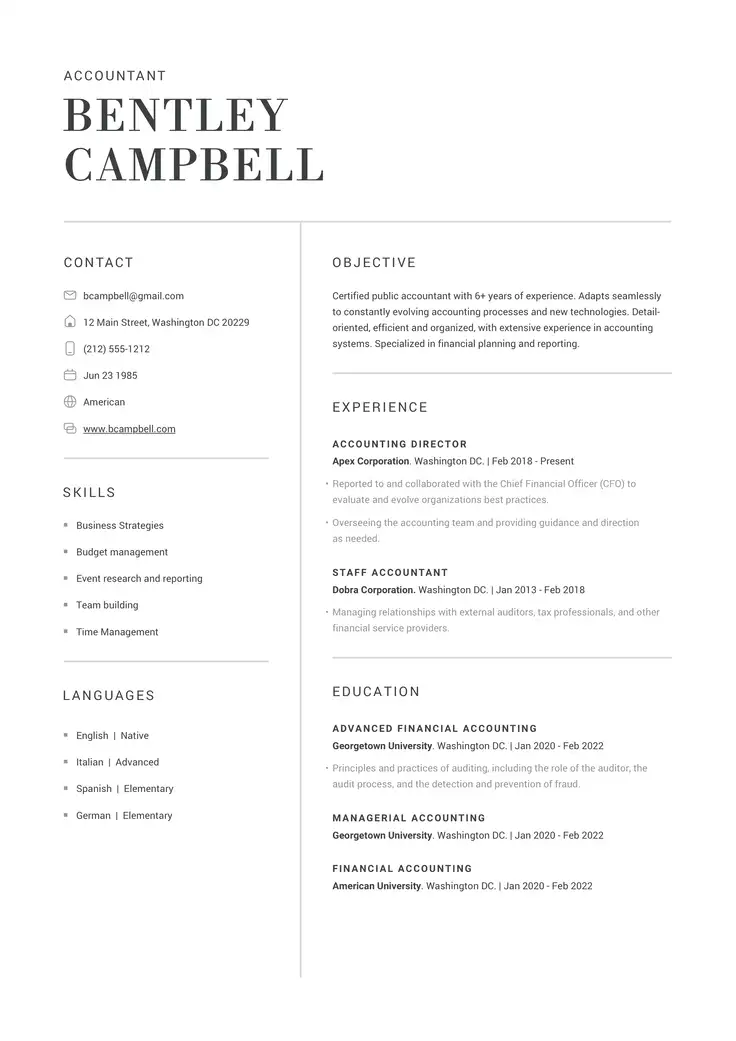After years of dedicated service, you eventually find yourself preparing for one of the most important missions yet: your post-military career transition.
Entering the civilian workforce may seem intimidating, but it’s completely achievable and has been done many times before.
Let’s first acknowledge the nervousness you may be feeling. In the military, you have structure, a sense of community, and concrete expectations. You’re familiar with the language associated with certain skills and activities.
While these may seem incompatible with the outside world, it is what will set you apart!
You also may not know how to write your resume for a civilian role. Translating military experience for a new job might be a challenge, and perhaps you’re not sure what recruiters are looking for in the current job market.
Fortunately, finding the right job through which to step back into the civilian sphere isn’t as tricky as it may initially seem, and tools like our AI resume builder can assist you with your job applications.
This guide will walk you through the best way to write a military-to-civilian resume, avoid common mistakes, and show employers the value of your professional life outside of service.
What Resume Format Works Best After Military Service?
One of the first questions veterans often ask is, “What’s the right format for my resume?”
While you may have used a functional resume in the service, it’s not the best practice for civilian applications.
Employers expect a reverse chronological format for your military-to-civilian resume, where your current role or most recent position comes first, followed by previous jobs. This is the most common format in the civilian sphere and is favored by most recruiters.
Post-Military Resume Example
Here is an example of a post-military service resume in reverse chronological order.
[John R. Smith]
[Project and operations manager]
[San Diego, CA | (555) 123-4567 | ✉️ johnsmith@email.com | [LinkedIn URL]
Project management and logistics professional
Professional summary
Disciplined and results-oriented former U.S. Navy Logistics Officer with 10+ years of experience in operations management, supply chain coordination, and team leadership. Proven success in high-pressure environments, leading cross-functional teams, improving operational efficiency, and managing multimillion-dollar assets.
Key Skills
Project Management | Logistics & Supply Chain | Operations Coordination | Cross-Functional Team Leadership | Budget Management | Safety & Risk Mitigation | Process Improvement | Microsoft Office Suite | SAP | Asana | Jira
Professional Experience
United States Navy—Logistics Officer
San Diego, CA | 2015-2025
- Led logistics operations for naval base supporting 5,000+ personnel, overseeing inventory, procurement, transportation, and distribution of supplies worth over $50M annually.
- Directed cross-departmental projects, including the implementation of a streamlined inventory system that reduced delays by 25%.
- Managed a team of 12 logistics specialists and mentored junior officers in leadership development and performance strategy.
- Coordinated overseas deployment logistics for multinational missions, ensuring seamless transportation and communication between units.
- Partnered with civilian contractors to improve warehouse operations, reducing turnaround time on critical supplies by 30%.
- Received Navy Commendation Medal for excellence in logistics planning and execution.
- Key Achievement: Spearheaded a supply chain optimization initiative that cut costs by $1.2M over two fiscal years without compromising operational readiness.
Education
- B.S. in Business Administration
- University of Maryland Global Campus
Certifications
- Project Management Professional (PMP) – PMI (Expected June 2025)
- Lean Six Sigma Green Belt – GoLeanSixSigma (2023)
- Certified Supply Chain Professional (CSCP) – APICS (2022)
Military Awards & Honors
- Navy Commendation Medal, 2023
- Navy Achievement Medal (2x), 2018 & 2020
- Good Conduct Medal, 2017
- Global War on Terrorism Expeditionary Medal, 2016
>> Volunteer Experience <<
Team Rubicon–Disaster Response Volunteer, 2022-Present
How To Write a Military to Civilian Resume: Step by Step
Follow our guide to create your civilian resume one step at a time. You can use our AI resume builder to provide tailored suggestions at any point in the writing process if you can’t find the words to describe your experiences best.
1. Choose the most relevant transferable skills from your service
As you describe each rank or position on your resume, you’ll want to focus on transferable skills.
Remember, the military provided you with technical skills, leadership skills, and the ability to handle challenging situations under pressure. Such skills aren’t just valuable in military or survival situations; they can be applied across different jobs and industries, and even in your personal life.
Transferable skills are highly sought after in the workforce because they make for efficient workers and teams. Transferable skills fall into two categories: hard or tech skills, and soft skills, which are personal qualities and personality traits.
What are some transferable skills to include on your ex-army resume? Consider the following.
Hard skills
Your time in the service likely included learning many technical skills. Assembling a rifle or using radar won’t be transferable to most jobs (There are exceptions! Gun shops, gunsmiths, air traffic controllers, and weather stations may need these skills), but there are tech skills that transfer easily.
For example, you may have used office productivity and communication tools like Microsoft Office or Teams or collaboration software like Asana and Jira. Businesses use these too. If you’re already comfortable with them and don’t have to be trained, that’s a plus.
Perhaps you worked in logistics, using dedicated logistical software. Businesses, too, need logistical engineers and supply chain managers.
Depending on your particular specialty in the military, you can demonstrate a lot more on your resume than just the basics. If you have experience in mechanical engineering or catering and food preparation knowledge, you’ll have demonstrable skills that can be shown to the employer.
Even drone piloting is becoming a desired tech skill, as the devices are increasingly used in photo and video media production.
Soft skills
Soft skills don’t mean you’ve gone soft—in fact, they indicate that you can work well with others. Leadership and teamwork are two skills that many companies covet. If you can prove you worked with diverse groups and led them well, you’ll be a top candidate.
Companies also need team members who can train, coach, and support others. Include the times you trained others and include the results in your job descriptions.
Finally, your military experience has likely ensured that you can make decisions under pressure. This will allow you to make informed, objective decisions in the corporate world as well. Having served in the army, navy, or air force, it will be assumed that you can bring a disciplined and organized approach to your work.
-
💡 Our expert’s advice

Pair every skill with a specific example or measurable achievement. For example, “led a 25-person team that reduced supply delays 40$ and saved $150K+ annually.”
2. Translate military experience into civilian language
Now that you know what transferable skills you may want to highlight, you’ll need to make sure your hiring manager can understand them. The best way to do this is to swap jargon for universally understood business terms.
For example, the following job description might work on an internal military resume:
Executed mission-critical logistical operations as the Supply Department Leading Petty Officer (LPO), overseeing Class IX requisitions, inventory control under NAVSUP P-485 protocols, and coordination of MHE assets to ensure continuous sustainment of fleet readiness during multi-theater deployments.
But it would likely leave a civilian hiring manager feeling confused. Re-read your resume, looking for acronyms or terminology that someone outside the military wouldn’t understand. Describe what you mean in a few words or replace it with a civilian equivalent. For example:
Military-to-civilian terms translated
- Commanded a platoon = Managed and supervised a team of 20–50 employees
- Operations NCO = Operations Manager or Project Coordinator
- Deployed = Worked on overseas assignments or remote site operations
- Mission planning = Strategic planning or project planning
- Supply chain/logistics = Inventory and materials management, procurement, and distribution
- Engaged targets = Delivered results in high-pressure environments
- After Action Report (AAR) = Project debrief or post-project analysis
- Conducted reconnaissance = Performed market research or data analysis
- Maintained readiness = Ensured operational efficiency and compliance
- Joint Task Force = Cross-functional team or interdepartmental collaboration
- SOP (Standard Operating Procedures) = Workplace procedures or company policies
- Weapons specialist = Equipment technician or mechanical systems expert
- Security clearance = Background-checked and trusted with sensitive/confidential information
- Chain of command = Organizational hierarchy or reporting structure
- Executed orders = Carried out assignments or implemented strategic initiatives
- Drill Sergeant/Training NCO = Instructor, Corporate Trainer, or Team Development Lead
- Combat experience = Crisis management, risk assessment, or decision-making under pressure
- Honorably discharged = Successfully completed employment/contract with strong performance and references
If you are ever staring blankly at a job description and wondering how to adapt your army experience to it, remember our resume builder has AI technology that can help you do just that. It provides suggestions on how to write about your military experience, which you can then edit.
-
💡 Our expert’s advice

Share your written description with a trusted friend or family member who is not a law enforcement officer. If they look confused, you’ll know there are still areas for improvement.
3. Show the value you bring to a civilian employer
Choosing the right words is only half the battle, and listing responsibilities is not enough. You want to demonstrate the value you bring by citing quantifiable achievements or KPIs. Employers want measurable data. For example, make sure to add:
- Cost savings you helped achieve
- The number of people you led in a team
- Operational improvements, such as reduced time or increased efficiency
Examples
- Managed 18 troops, boosted equipment readiness 30%, and reduced downtime 20% by improving maintenance scheduling processes.
- Led 25-person team, cut supply delays 40%, and saved $150K annually by optimizing logistics and reducing material waste.
Whenever possible, use metrics that demonstrate your greatest achievements and commitment to operational efficiency.
Especially in towns near military bases, listing military experience on your resume is golden. These towns often seek to honor veterans by hiring them.
Add your military experience the same way you would list any other job. Include each position or rank you held whilst serving, and consider using the STAR method to highlight the impact you made. For each entry, you’ll need to indicate essential information such as:
- The dates you held the position
- Where you were based
- Some of the key responsibilities and achievements you managed
Most resumes only go back ten years or so. If you’ve had a long military career, focus on your last three positions or those from the past ten years.
4. Include your military and civilian education and certifications
After completing your work experience section, it’s time to move on to your education section.
This, too, will be listed in reverse chronological order. Include both university education and relevant military training, such as leadership schools or technical courses.
At a minimum, your education entries should include the following:
- Degree or training name
- Institution name, city, state
- Year of graduation (not obligatory if it is more than 5 years ago, as it might indicate your age)
You can optionally include bullet point descriptions here, too. This is a good way to highlight the value of training relevant to the job at hand. You might include names of courses or special projects.
In this section or a stand-alone section, list any certifications or licenses you’ve received during or after your military career. These might include:
- Management certifications like PMP
- Tech certificates like CompTIA
- Safety training, such as that provided by OSHA
- Licenses like CDL or medical licenses
How To Avoid Common Mistakes on a Post-Military Resume
Even the best candidates can make mistakes. One of the best ways to avoid mistakes is to utilize our online resume builder. You’ll be prompted to put in all the necessary information, and it will take care of the formatting for you.
Make sure your resume is tailored to the job
Not customizing resumes is one of the top mistakes job applicants make across the board. Save a generic copy of your resume, but tailor a version to each job you apply for. Highlight the specific skills you’ll need for the job and include keywords from the job posting to show you’re a good fit.
Leave out irrelevant details
Too much information can make your resume look cluttered and, in worst-case scenarios, bias a hiring manager against you. Make sure none of the following irrelevant details make it into your resume:
- Your full address (only city and state are required)
- A photo
- Your age
- Marital status
- High school information
- Experiences older than 10 years
- Education or certifications that are no longer current
- Hobbies or personal activities that don’t add value
Focus on skills instead of rank
In the civilian world, most people couldn’t tell you the difference between an NCO and an enlisted. Unless they’ve been in the military themselves, rank isn’t likely to communicate much and will only confuse your reader..
Instead of just stating your rank, focus on the skill you used in that rank—how many people you were responsible for, what you accomplished, and the tools and skills you used to get there.
Don’t use military jargon
Your military-to-civilian resume needs to be quick and easy to read for the employer. Whilst you may be used to using a range of terms and expressions that are common in military circles, these may not translate well into the commercial job market.
Be mindful when creating your resume to avoid military jargon. The writing in your resume needs to be professional and accessible to the recruiter; otherwise, it will simply be passed over. Recruiters don’t have the time or energy to try to translate what you are trying to say.
💡Tip
Copy and paste your resume into an AI text generator along with the prompt, “Identify potential jargon and suggest alternative phrasing.”
Making the move from military life to civilian life can be a little disorienting at first. However, it’s important to keep in mind that you’ve already got all it takes to get this mission accomplished as long as you adapt your approach.
FAQs
If you’ve been in the military for a while, it’s likely been a long time since you applied for a civilian job. Or perhaps your entire career has been in the military. It’s normal to feel uncertainty when embarking on something new.
Many veterans have reported culture shock on returning to the commercial world. There are differences in application processes, including job search strategies and networking, which are less structured than the military system.
Fortunately, there are lots of resources available to help you get your resume and your job search on track. You can view military-to-civilian resume examples, for example. If you’re looking for a military resume builder, give ours a try.
To better guide you to the right employment opportunities, it could also be helpful to try a course provided by the Transition Assistance Program (TAP). This has been specially created by the US military to give departing servicemen and women assistance in strategizing their future careers.
The U.S. Department of Veterans Affairs has a dedicated Careers and Employment webpage. There are also veteran-specific job boards like Hire Heroes USA.
Did you know? According to the U.S. Bureau of Labor Statistics 2024 report, the unemployment rate for veterans is lower than for non-veterans. This is due in part to the support services that are available.
Typically, you should limit your resume for veterans to one page if you have five years of experience or less. You can extend it to two pages if you have more relevant experience or over 5 years as a working adult.
Remember to keep everything succinct. Typically, you won’t list experiences older than 10 years.
Making the move from military to civilian employment is a transition, not a roadblock. The best way to prove yourself as the best person for a role is to highlight your transferable skills, show measurable results, and align your experience with the job description.
With preparation, the right resume format, simple explanations, and a focus on specific examples of your greatest achievements, you’ll move forward with confidence into your next interview and land the opportunity you’ve been looking forward to!
Related Posts





